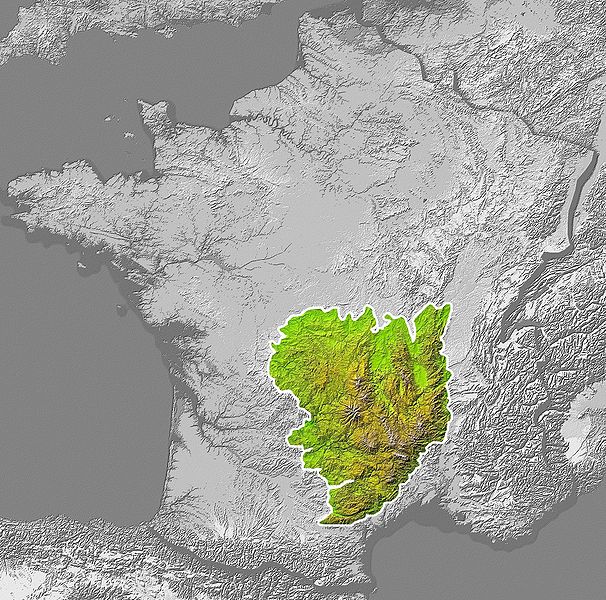Researchers Investigate Detrital Zircon Provenances From Southern France to Explore the Evolution of the Variscan BeltUpdate time:09 23, 2016
Geographical position of the Massif Central in France.(Image: Wikipedia.org) In the Southern French Massif Central, the Late Paleozoic sedimentary sequences of the Montagne Noire area provide clues to decipher the successive tectonic events that occurred during the evolution of the Variscan belt. Previous sedimentological studies already demonstrated that the siliciclastic deposits were supplied from the northern part of the Massif Central. Prof. LIN Wei and his team from IGG along side collaborators in France, have investigated detrital zircon provenances from southern France to explore the evolution of the Variscan Belt. They sampled detrital zircons from the Early Devonian (Lochkovian) conglomerate and sandstone, and the Carboniferous (Visean to Early Serpukhovian) sandstone from the recumbent folds and the foreland basin of the Variscan Southern Massif Central in Montagne Noire. Their analysis yielded U-Pb ages ranging from Neoarchean to Late Paleozoic with several age population peaks between 2700–350 Ma(1Ma: 1 million anniversary). The dominant age populations, however, are concentrated in the Neoproterozoic and Paleozoic. The dominant concordant detrital zircon age populations in the Lochkovian samples range between 480-445 Ma with a statistical peak around 450 Ma. These ages were interpreted as reflecting the rifting event that separated several continental stripes, such as Armorica, Mid-German Crystalline Rise, and Avalonia from the northern part of Gondwana. However, Ediacaran and Cambrian secondary peaks are also observed. The detrital zircons with ages between 352–340 Ma, with a statistical peak around 350 Ma, come from the Early Carboniferous volcanic and plutonic rocks similar to those exposed in the NE part of the French Massif Central. Wei and colleagues found that some Precambrian zircon grains recorded a more complex history and may have experienced a multiple periods of recycling. They speculated that Archean and Proterozoic grains were firstly deposited in Cambrian or Ordovician terrigenous rocks, and were subsequently redeposited in Devonian and/or Carboniferous formations. Alternatively, they also suggest that the ancient grains could be inherited grains, scavenged from an underlying, but as yet unexposed Precambrian basement. This work was published in Tectonophysics, 677–678 (2016) 1–33. The study was in collaboration with Prof. Michel Faure of Université d’Orléans CNRS/INSU. The work was supported by the State Key Laboratory of Lithospheric Evolution, IGGCAS, “Strategic Priority Research Program” of the Chinese Academy of Science (XDB03010802), and the National Natural Science foundation of China (grants 41273070, 41225009, 41202079).
Fig. 1 Schematic topographic reconstruction of the French Massif Central during the Visean and the possible sources for the detrital zircons of the Foreland basin with the cumulative probability plots of detrital zircon U-Pb ages. (Image by LIN et al.)
|
Contact
LIN Wei
Division: Lithosphere Evolution Goup: Sedimentology and Structural Geology Phone: 86-10-82998546 E-mail: linwei@mail.iggcas.ac.cn Related Articles
Reference
|
-
SIMSSecondary Ion Mass Spectrometer Laboratory
-
MC-ICPMSMultiple-collector ICPMS Laboratory
-
EM & TEMElectron Microprobe and Transmission Electron Microscope Laboratory
-
SISolid Isotope Laboratory
-
StIStable Isotope Laboratory
-
RMPARock-Mineral Preparation and Analysis
-
AAH40Ar/39Ar & (U-Th)/He Laboratory
-
EMLElectron Microscopy Laboratory
-
USCLUranium Series Chronology Laboratory
-
SASeismic Array Laboratory
-
SEELaboratory of Space Environment Exploration Laboratory
-
PGPaleomagnetism and Geochronology Laboratory
-
BioMNSFrance-China Bio-mineralization and Nano-structure Laboratory

 Print
Print Close
Close

